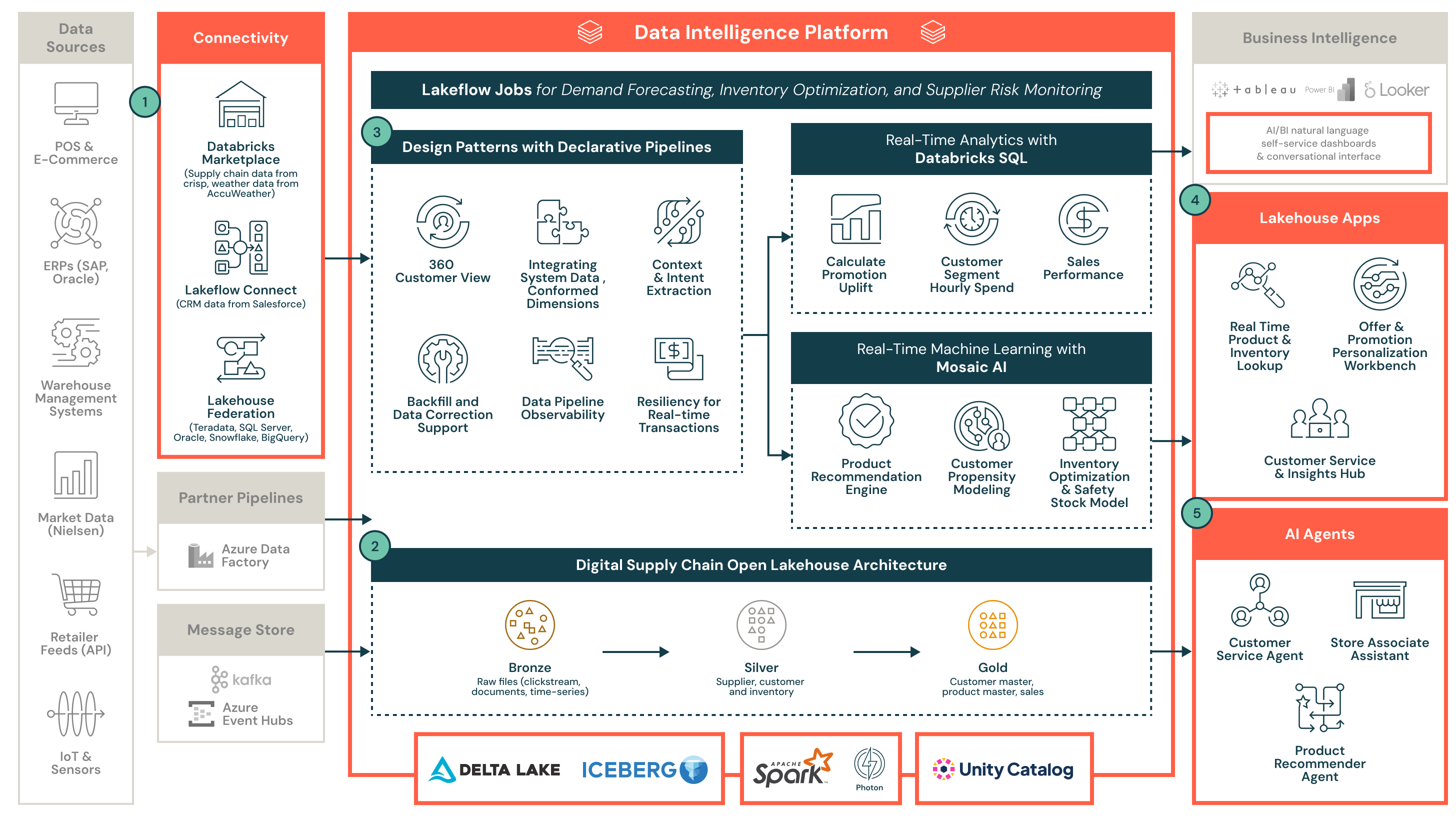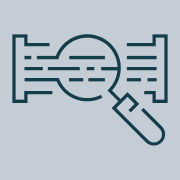Retail Demand Forecasting Reference Architecture
This architecture helps you understand integrations with common industry sources and sinks for demand forecasting use cases for Retail. It outlines the best practice design patterns across the lakehouse architecture.

Overview
This reference architecture illustrates how the Databricks Lakehouse Platform enables real-time, AI-powered demand forecasting for retailers.
- Data is ingested from diverse sources including POS transactions, e-commerce clickstreams, ERP and pricing systems (e.g., SAP, Oracle), inventory and supply chain platforms, loyalty programs, and external signals such as weather, demographics, and competitor pricing. These arrive through Lakehouse Federation, Lakeflow Connect, and streaming sources like Kafka and Azure Event Hubs, or through Databricks Marketplace and APIs. Ingested raw data is landed in the Bronze layer as time-series logs, transactions, and event records.
- Using declarative pipelines, this data is cleaned, normalized, enriched, and joined across domains (product, store, inventory, pricing) into trusted Silver tables. This includes promotion and price change tracking, backfill handling, and observability for real-time data streams. Advanced feature engineering transforms this into Gold datasets optimized for forecasting—such as SKU/store/day-level demand signals and promotion-adjusted sales trends. These layers are governed with Unity Catalog to enforce security, lineage, and discovery.
- Retail analysts leverage Databricks SQL to perform real-time analytics—analyzing sales trends, inventory turnover, and promotion effectiveness—and power BI dashboards like Forecast vs Actual by SKU, region, and timeframe using tools like Tableau, Power BI, Looker, or AI/BI Dashboards.
- Meanwhile, Mosaic AI enables batch and real-time ML use cases including inventory optimization, anomaly detection, and time-series forecasting at SKU/store level—all trained directly on Gold-layer features. These insights are operationalized through Lakehouse Apps like the Forecast Review Assistant, Inventory Replenishment Optimizer, and Promotion Planning Hub.
- Finally, AI Agents such as the Forecast Explainer, Store Manager Assistant, and Product Recommendation Agent provide intelligent assistance to business users, surfacing actionable insights through natural language and contextual decision support—all powered by governed, real-time data on the Databricks Lakehouse.


